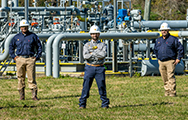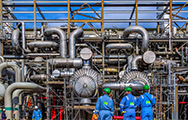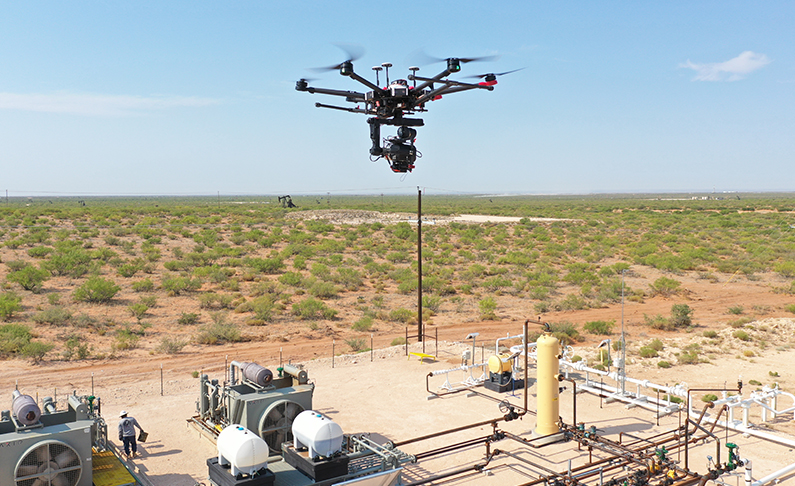Producing shale oil and gas responsibly
Shales – also known as tight gas and oil – will continue to play a role in meeting global energy demand. We work to unlock shale resources safely and responsibly, using advances in technology and by following our onshore operating principles.

Our shales activity in the USA is focused on the Permian Basin.
Tackling emissions
We have a range of technologies and practices in place in our shales operations to help find and reduce greenhouse gas emissions (GHG), such as methane which may be emitted during the extraction and processing of shales.
Our approach includes methane leak detection and repair programmes, primarily using handheld optical gas imaging cameras. In the Permian Basin, USA, we deploy drones equipped with multiple cameras and sensors to detect methane emissions more effectively and repair them more quickly. In 2020, we expanded the programme to cover our 400 sites in the Permian Basin.
We have taken steps to reduce flaring, or burning off, of gas from shales. Flaring contributes to climate change and wastes valuable resources. In 2018, we upgraded Permian Basin older facilities with equipment to automatically shut down production, instead of flaring gas, to relieve high pressure from certain high-demand pipelines. In 2020, we started replacing flare stacks, the devices used to burn off gas, with improved gas processing infrastructure in the Permian Basin.
In 2020, we also completed the installation of around 130 more energy-efficient control devices, which regulate the flow of gas, to potentially reduce GHG emissions from Permian facilities by up to 3%.
Since 2017, these efforts and others have reduced GHG emissions by 34%, including methane emissions by 50% and flaring by more than 80%, across our Permian facilities.
We have long supported the direct regulation of methane emissions when regulation is efficient, effective and encourages innovation. For example, in 2020 in the USA, we advocated a return to the direct regulation of methane emissions by the United States Environmental Protection Agency under the Clean Air Act. Shell believes more robust measurement, transparency and management are needed to successfully reduce methane emissions globally (see Methane emissions).
Local communities
Engagement with communities is an important part of our approach to shales. This includes our extensive engagement in Argentina with indigenous people, as well as local farmers and nearby communities, in the Vaca Muerta shales basin in Neuquén (see Indigenous people). These efforts help us understand community concerns so they can be proactively addressed in our operations.
Earth tremors
We believe there is a relatively low likelihood of hydraulic fracturing technologies or produced water disposal well operations inducing earth tremors that are felt on the surface. We take precautionary measures to prevent tremors and proactively manage the risk in accordance with regulatory requirements.
Read more about our approach at www.shell.com/energy-and-innovation/shale-oil-and-gas




